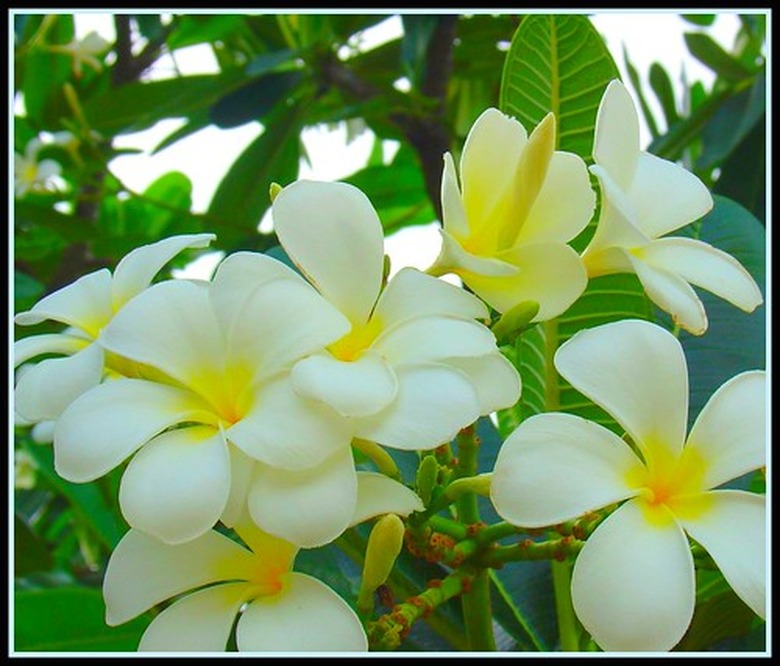Stephanotis Problems
Stephanotis is a good porch or houseplant with white summer flowers. This vine is covered with large, oval, glossy green leaves, and grows to 12 feet high.
Mealybugs
Mealybugs are small, wingless insects that attack the stephanotis. They use their piercing mouths to suck the sap out of the plant leaves.
Scale Insects
Scale insects appear as bumps on the stephanotis leaves. They suck the plant sap until the leaves turn yellow and drop off.
Infestation Solutions
Isolate any stephanotis from other plants if you notice any bug infestation. Use insecticidal soap to wash the bugs off. Encourage natural enemies of the pests, like parasitic wasps and ladybugs, to help keep the unwanted bug population under control.
- Stephanotis is a good porch or houseplant with white summer flowers.
- They suck the plant sap until the leaves turn yellow and drop off.
Leaf Disease
Sooty mold causes a black surface fungus to grow along the stephanotis stems and leaves. Being weakened by scale insects encourages sooty mold attacks.
Root Disease
Stephanotis can develop root rot when exposed to excessively wet conditions during cool weather.
Temperature Changes
Stephanotis does not like extreme temperature changes. It needs a constant cool of 55 to 60 degrees Fahrenheit during the winter.
Care For Stephanotis
With its cascading blooms of white flowers framed by glossy, dark green leaves, stephanotis (Stephanotis floribunda) is also commonly called the bridal or wedding plant. Home gardeners who live in U.S. Department of Agriculture plant hardiness zone 12 can plant stephanotis in the ground and grow it outdoors year-round. Fortunately, it also grows quite well in a container and can be cultivated as a houseplant in cooler climates. That doesn't mean the plant has to spend its entire life indoors, however. If you can locate the roots in the shade but expose much of the rest of the vine to sunlight, that would be ideal. Stephanotis also prefers soil on the moist side but never waterlogged. A trellis cage will allow the vine to climb and add vertical interest. They should also be protected from cold drafts. Water enough to keep the soil moist but not waterlogged during the growing season, but let your stephanotis dry out a bit between waterings during fall and winter. Mealy bugs and scale sometimes are problematic to indoor stephanotis plants. Indoors or outdoors, container or in-ground, stephanotis plants benefit from a little fertilizer during the growing season. Reduce this amount to 1/2 teaspoon for every gallon of water for indoor plants.
- Sooty mold causes a black surface fungus to grow along the stephanotis stems and leaves.
- Indoors or outdoors, container or in-ground, stephanotis plants benefit from a little fertilizer during the growing season.
References
- Backyard Gardener: Stephanotis jasminoides
- Logee's Greenhouses Spectacular Container Plants; Byron Martin and Laurelynn G. Martin; 2001
- The House Plant Expert; D. G. Hessayon; 1992
- Colorado State University Extension: Plantalk — Stephanotis
- Missouri Botanical Garden: Stephanotis Floribunda
- UCCE Master Gardeners of Orange County: Ornamentals — Stephanotis Floribunda
- Wedgewood Gardens: Instructions: Caring for Stephanotis (Madagascar Jasmine)
- University of Missouri Extention: Least-Toxic Control Methods to Manage Indoor Plant Pests
